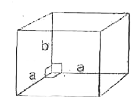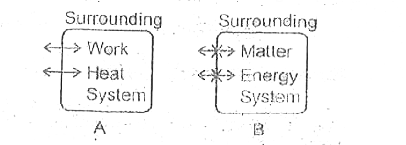What type of systes are the following system?
Hot tea placed in a cup.
To determine the type of system represented by hot tea placed in a cup, we can analyze the characteristics of the system in terms of energy and matter exchange. Here’s a step-by-step solution:
Step 1: Identify the System
- The system in question is the hot tea contained within a cup.
Step 2: Analyze Matter Exchange
- In this scenario, the cup is rigid and sealed at the bottom, meaning that the tea cannot escape from the cup. Therefore, there is no exchange of matter between the tea and the surroundings.
Step 3: Analyze Energy Exchange
- The cup is open at the top, which allows heat energy to be exchanged between the hot tea and the surrounding air. The heat from the tea can be lost to the environment, and the surrounding air can affect the temperature of the tea.
Step 4: Classify the System
- Based on the observations:
- Since there is no exchange of matter (the tea remains in the cup) but there is an exchange of energy (heat can flow in and out), this system can be classified as a closed system.
Conclusion
- Therefore, the hot tea placed in a cup is an example of a closed system, where energy can be exchanged with the surroundings, but matter cannot.
---
- The system in question is the hot tea contained within a cup.
- In this scenario, the cup is rigid and sealed at the bottom, meaning that the tea cannot escape from the cup. Therefore, there is no exchange of matter between the tea and the surroundings.
- The cup is open at the top, which allows heat energy to be exchanged between the hot tea and the surrounding air. The heat from the tea can be lost to the environment, and the surrounding air can affect the temperature of the tea.
- Based on the observations:
- Since there is no exchange of matter (the tea remains in the cup) but there is an exchange of energy (heat can flow in and out), this system can be classified as a closed system.
- Therefore, the hot tea placed in a cup is an example of a closed system, where energy can be exchanged with the surroundings, but matter cannot.
Topper's Solved these Questions
- BOOK - ICSECHAPTER - CHEMICAL THERMODYNAMICS EXERCISE - REVIEW EXERCISES (Fill in the blanks )6videos
CHEMICAL THERMODYNAMICS
- BOOK - ICSECHAPTER - CHEMICAL THERMODYNAMICS EXERCISE - VERY SHORT ANSWER TYPE QUESTIONS56videos
CHEMICAL THERMODYNAMICS
- BOOK - ICSECHAPTER - CHEMICAL THERMODYNAMICS EXERCISE - NCERT TEXT-BOOK. EXERCISES22videos
CHEMICAL THERMODYNAMICS
- BOOK - ICSECHAPTER - CHEMICAL BONDING AND MOLECULAR STRUCTUREEXERCISE - NCERT TEXT-BOOK EXERCISES ( WITH HINTS AND SOLUTIONS)47videos
CHEMICAL BONDING AND MOLECULAR STRUCTURE
- BOOK - ICSECHAPTER - CLASSIFICATION OF ELEMENTS AND PERIODICITY IN PROPERTIESEXERCISE - NCERT TEXT-BOOK. EXERCISE (With Hints and Solutions)63videos
CLASSIFICATION OF ELEMENTS AND PERIODICITY IN PROPERTIES
Similar Questions
What type of systes are the following system?
Hot tea placed in a thermos flask.View SolutionWhat type of systes are the following system?
Hot tea placed in a sealed metallic tea pot.View SolutionWhat type of effects are involved in the following reactions ?
 View Solution
View SolutionThe type of crystal system shown is
 View Solution
View SolutionDifferent types of systems are given below

The A and B systems respectively areView SolutionWhat are types of following semiconductors I and II.

 View Solution
View SolutionWhat is hot spot ?
View SolutionWith reference to the cultivation of tea answer the following :
Why tea bushes have to be pruned at regular intervals ?View SolutionAll types of tissue systems have
View SolutionClassify the following as open, closed, or isolated system.
a. A beaker containing as open, boiling water.
b. A chemical reaction taking place in an enclosed flask.
c. A cup of tea placed on a table.
d. Hot water placed in perfectly insulated closed container.
e. A thermos flask containing hot coffee.View Solution

